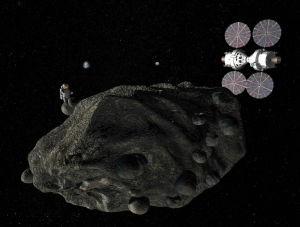Plymouth Rock: 90 Days in a Minivan
At first I was excited to read press reports of a Lockheed-Martin concept for a bare-bones human asteroid mission, using a pair of Orion capsules yoked together. Finally, a near-term plan! Because the Orion is mostly built, the first “Plymouth Rock” mission could fly as early as 2016, nine years ea…

At first I was excited to read press reports of a Lockheed-Martin concept for a bare-bones human asteroid mission, using a pair of Orion capsules yoked together. Finally, a near-term plan! Because the Orion is mostly built, the first "Plymouth Rock" mission could fly as early as 2016, nine years earlier than NASA's (extremely) loose target for an asteroid trip.
After skimming a 41-page Lockheed white paper on Plymouth Rock, I'm less excited.
I don't doubt that motivated astronauts would forgo a certain amount of comfort to make history's first trip into deep space. And the three-month trip to the asteroid wouldn't be so bad. Two Orions provide about 10 cubic meters of volume for each of two astronauts—not nearly as roomy as the International Space Station, but bearable. On the way back, though, one of the vehicles would be jettisoned, leaving the pair to squeeze into a single capsule. Now they'd each get four cubic meters. For three months. That's equivalent, says the white paper, to the volume of a modern American minivan with its seats removed. It's twice the room the three-man Apollo 7 crew had in 1968, but their mission only lasted 11 days—and they were miserable.
Recognizing that this may be too cramped for even the most gung-ho space adventurer, the authors suggest adding another module, something like the logistics modules attached to the space station. But now the simple plan starts to get more complicated, and more expensive.
Like I said: Less excited.